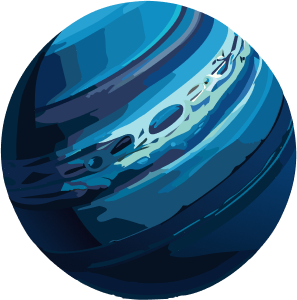
SPACE JOURNEY


Mercury's surface temperatures are both extremely hot and cold. Because the planet is so close to the Sun, day temperatures can reach 430°C. Without an atmosphere to retain that heat at night, temp. drop to -180°C.
Mercury is the fastest planet, zipping around the Sun every 88 Earth days.

Venus is the third brightest object in the sky after the Sun and Moon. It spins slowly in the opposite direction from most planets. It's also the hottest planet in our solar system with surface temp. hot enough to melt lead.
Venus is similar in structure and size to Earth, and is sometimes called Earth's evil twin.

Earth it is the only world in our solar system with liquid water on the surface. It is also the biggest of the four planets closest to the Sun, all of which are made of rock and metal.
Earth is the only planet in the solar system whose English name does not come from Greek or Roman mythology. The name was taken from Old English and Germanic. It simply means "the ground."

Mars is one of the most explored bodies in our solar system, and it's the only planet where we've sent rovers to roam the alien landscape. NASA missions have found lots of evidence that Mars was much wetter and warmer, with a thicker atmosphere, billions of years ago.
Mars was named by the Romans for their god of war because its reddish color was reminiscent of blood.

Jupiter's signature stripes and swirls are actually cold, windy clouds of ammonia and water, floating in an atmosphere of hydrogen and helium. The dark orange stripes are called belts, while the lighter bands are called zones, and they flow east and west in opposite directions.
Jupiter’s iconic Great Red Spot is a giant storm bigger than Earth that has raged for hundreds of years.

Saturn is unique among the planets, adorned with a dazzling system of icy rings. Like fellow gas giant Jupiter, Saturn is a massive ball made mostly of hydrogen and helium. The farthest planet from Earth discovered by the unaided human eye, Saturn has been known since ancient times.

Uranus is the seventh planet from the Sun, and it has the third largest diameter of planets in our solar system. Uranus appears to spin sideways. Uranus rotates at a nearly 90-degree angle from the plane of its orbit.
Uranus is a very cold and windy world. The ice giant is surrounded by 13 faint rings and 28 small moons.

Dark, cold and whipped by supersonic winds, giant Neptune is the eighth and most distant major planet orbiting our Sun.
Neptune was the first planet located through mathematical calculations. German astronomer Johann Galle was the first to observe the planet in 1846.
